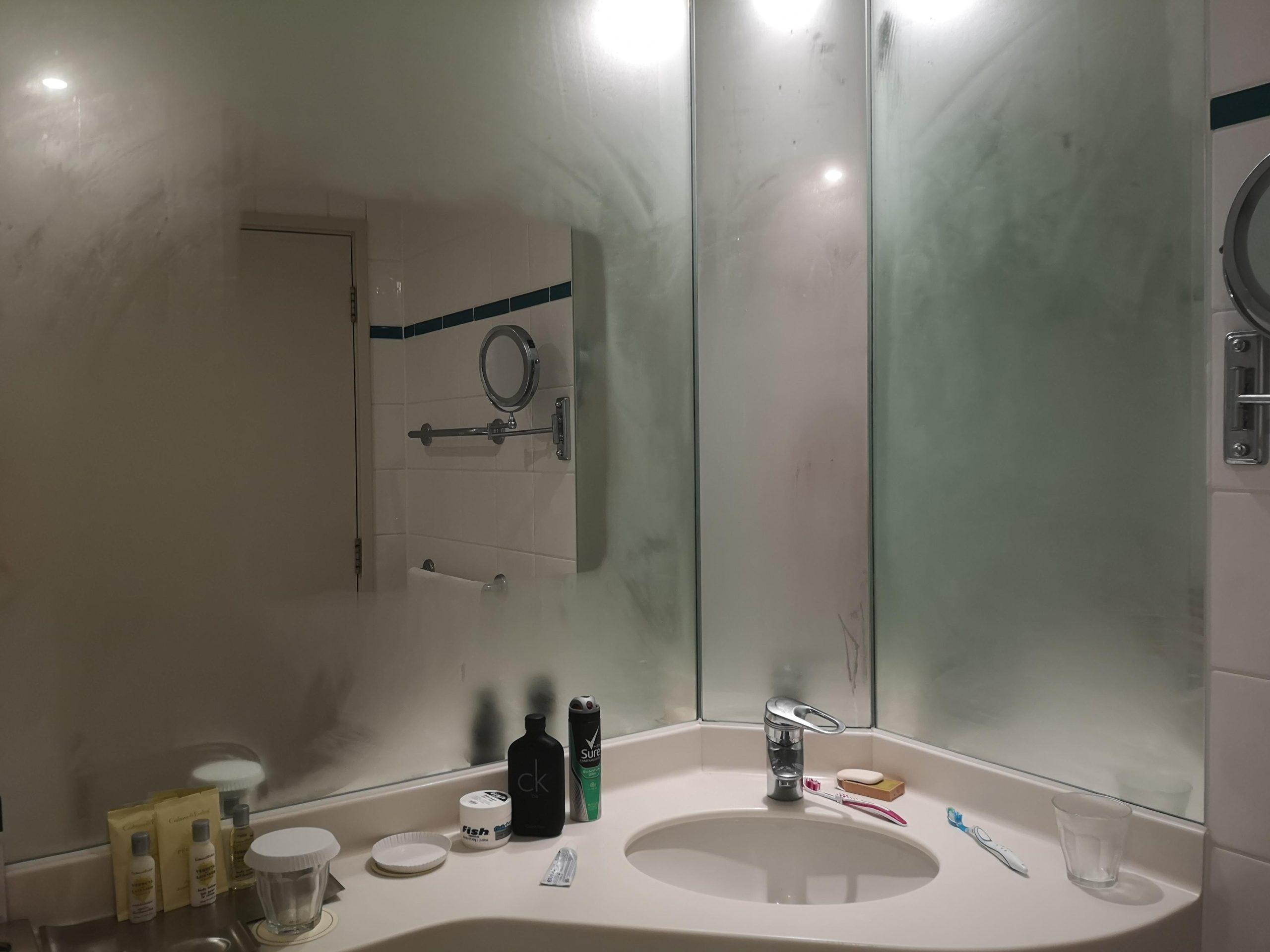Foggy Bathroom Mirror: Preventing Condensation.

Foggy bathroom mirrors are a common problem, often leading to frustrating reflections. Understanding the causes and implementing effective solutions can significantly improve your bathroom experience. This thorough guide will offer you with actionable strategies to prevent condensation on foggy bathroom mirrors, transforming your bathroom from a misty mess to a crystal-clear haven. We’ll delve into various methods including strategic ventilation, humidity control, and even the use of specific anti-fogging solutions. By the end of this article, you’ll have a clear understanding of how to maintain a clear and comfortable bathroom.
Understanding the Causes of Foggy Bathroom Mirrors
The Science of Condensation
Condensation occurs when warm, moist air comes into contact with a cooler surface, such as a bathroom mirror. The warm air cools down and the water vapor in it transforms into liquid water, forming the dreaded fog. Understanding this basic principle is key to developing effective solutions. A number of factors contribute to this phenomenon in a bathroom, including the nature of the steam produced during showering or bathing, and the interplay between temperature and moisture text of the air.
Implementing Ventilation Solutions
Strategic Ventilation Strategies
Proper ventilation is crucial in controlling bathroom humidity. Ensuring adequate airflow helps prevent excess moisture from accumulating and contributing to condensation. For instance, consider installing exhaust fans in your bathroom that will effectively clear out steam and moisture as they are produced. This is a crucial step when trying to avoid excessive humidity and fog.
Controlling Bathroom Humidity
Dehumidifiers and Their Importance
High humidity levels contribute significantly to condensation. Consider installing a dehumidifier in your bathroom to absorb excess moisture from the air. These devices effectively reduce the amount of water vapor, reducing the likelihood of condensation forming on your mirror. In addition to dehumidifiers, consider other ways of lowering the overall humidity text of your bathroom, such as opening a window during bathing to release moisture, for instance.
Using Anti-Fogging Solutions
Exploring Commercial Products
Commercial anti-fogging solutions offer a scope of products to combat condensation. These solutions usually involve creating a barrier on the mirror surface, preventing water molecules from adhering to it. For instance, certain sprays can help to create a protective film that repels water molecules, maintaining clear vision. Another solution is to use solutions which are applied directly to the mirror.
Regular Maintenance Practices
Keeping Your Mirror Clean
Maintaining a clean mirror is crucial for preventing fogging. Dirt and grime can trap moisture, exacerbating condensation issues. Regular cleaning using gentle, non-abrasive methods ensures a smooth surface, promoting proper airflow and preventing moisture from adhering to the mirror. Cleaning your mirror regularly, for instance, is an essential step for preventing fogging. Furthermore, ensuring good bathroom cleanliness can contribute to minimizing the buildup of condensation
Q2: Are there any DIY methods to prevent bathroom mirror fogging?
A2: Yes, there are several DIY methods to combat bathroom mirror fogging. One simple method involves wiping the mirror down with a squeegee after showering or bathing. This removes the water droplets before they have a chance to condense, providing an effective solution. Using a towel to dry the mirror or using a special anti-condensation solution can also be employed, depending on your preferences.
Q3: What are some additional tips for a fog-complimentary bathroom?
A3: In addition to the tips outlined in this guide, consider installing a bathroom vent fan for better airflow. This reduces moisture text, especially if the area is not well-ventilated. Improving insulation can also reduce temperature fluctuations within the bathroom. This will effectively help mitigate fog buildup in your mirror.
Q4: How often should I clean my mirror to prevent fogging?
A4: Ideally, you should clean your mirror regularly, especially after showers or baths. Maintaining a clean surface will prevent the accumulation of moisture and dirt, thereby preventing the build up of humidity in the bathroom, thus reducing fogging on your mirror. The cleaning schedule may vary depending on how often you use the bathroom.
Conclusion (Alternative):
Preventing condensation on foggy bathroom mirrors is easier than you think. By focusing on ventilation, humidity control, and implementing anti-fogging solutions, you can transform your bathroom from a misty mess to a comfortable and inviting space. These tips will keep your reflection clear and help improve your bathroom experience. Take a look at more tips about improving your bathroom experience and other related text on our blog!.
In conclusion, preventing condensation on foggy bathroom mirrors involves a combination of strategies, from proper ventilation to using anti-fogging solutions. By understanding these methods, you can enjoy clear views and a more comfortable bathroom experience. For a more in-depth look at specific product recommendations and further tips, visit our blog post dedicated to foggy bathroom mirrors. This way, you can prevent condensation and have a much clearer reflection in your mirror!
